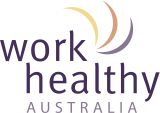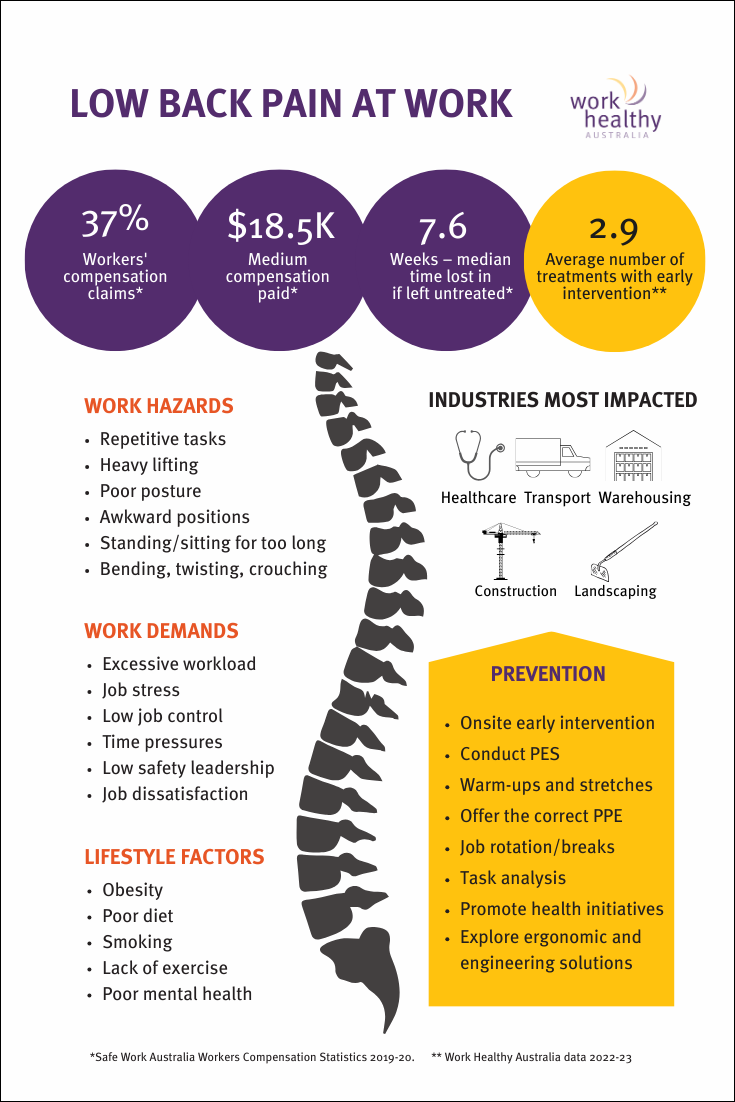
In Australian workplaces, back-related issues account for more than one third of workers' compensation claims. Source: Safe Work Australia
From a dull ache to debilitating impairment, low back pain affect us differently, and can be caused by a variety of factors.
In Australian workplaces, back-related issues account for more than one third of workers’ compensation claims.
In this article, we consider what workplace hazards and risk factors might lead to lower back pain, and how employers can prevent them.
1. Back pain affects 1 in 6 Australians
In other words, there are people within your workplace currently experiencing back pain. It can be short-term or become chronic and long-lasting. There can be multiple workplace risk factors that could contribute to low back pain. They include:
- Standing or sitting in one position for too long with little movement
- Repetitive tasks such as kneeling, squatting, bending, twisting and lifting
- Heavy lifting and high physical work demands
- Prolonged poor posture
- Awkward positions
- Whole-body vibration
Industries with high incidences of workplace low back pain and back injuries are healthcare, transportation, construction, warehousing and landscaping. This is due to high-risk factors associated with jobs in these industries.
2. Workers exposed to psychosocial hazards are at risk
Research has noted the connection of psychosocial risk factors with chronic low back pain. Safe Work Australia states that “Job demands that are too high or too low are a psychosocial hazard. This means they can cause psychological and physical harm.” Job demands found to be associated with low back pain include:
- Excessive workloads
- Workplace stress and conflict
- Low job control
- Time pressure
- Job dissatisfaction
- Low safety culture

3. If left untreated, the average time off work is 7.6 weeks
According to Safe Work Australia, the average time away from work for low back pain (if left untreated) is 7.6 weeks.
At Work Healthy Australia, the average number of onsite treatments to release for this body region is 2.9. This demonstrates the effectiveness of an early intervention program in reducing LTIs.
The common factors that we see contributing to delays in recovery include:
- Language barriers
- High BMI
- High physical work demands
- High pain catastrophising
- Degenerative change
4. Lifestyle factors increase the risk of low back pain
Lifestyle factors such as being overweight, having low levels of physical activity, having depression and being a smoker have been associated with low back pain. Lifestyle factors can be modified – many workplaces are delivering health promotion initiatives as part of their health and safety and employee engagement strategies.
5. There are measures workplaces can put in place to prevent low back pain
Listen to our Workplace Health Provider, Max Cohrssen, explain low back pain in workplaces:
In conclusion, workplace health and safety measures that can be implemented to prevent low back pain include:
- Onsite early intervention and injury management program
- Pre-employment screening
- Task analysis and risk assessment
- Warm-ups and stretches, job rotations/breaks or job changes
- Engineering solutions, e.g. changing how the task is performed with machinery
- Automation, e.g. removing a worker component out of the task completely
- PPE and ergonomics
For additional information on various pain management techniques, including Transcutaneous Electrical Nerve Stimulation (TENS) therapy, you may refer to [this article by iTENS.
Sign up to our monthly enewsletter
"*" indicates required fields




